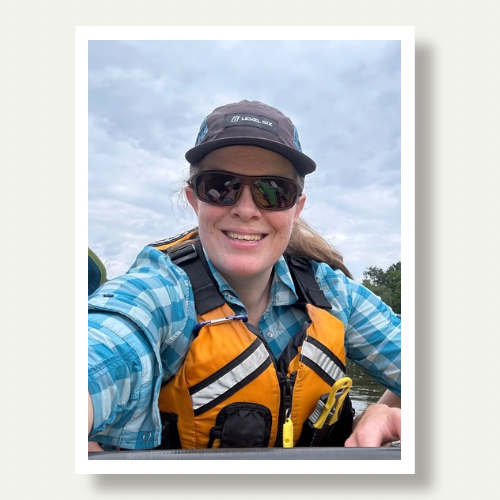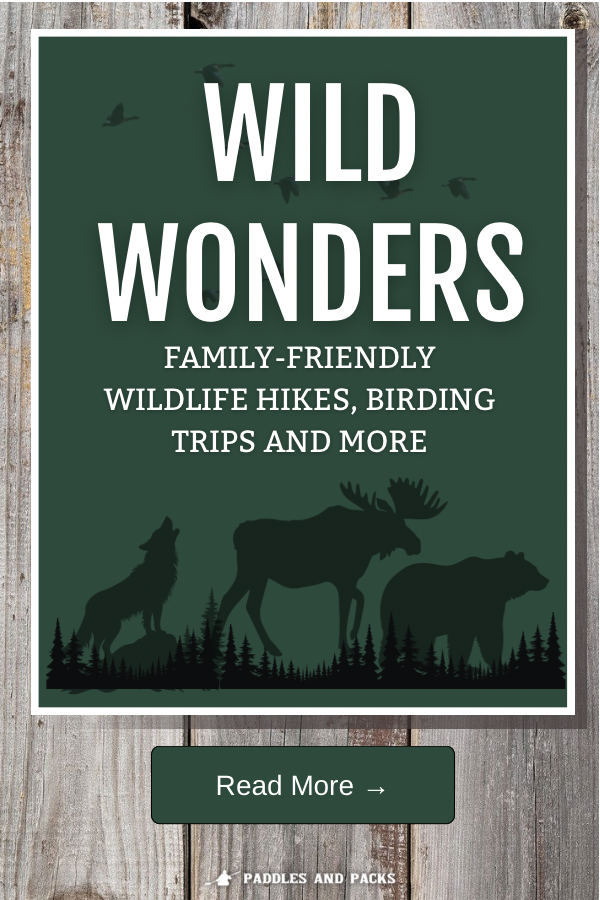Against the Current: Ontario’s Wild Salmon Journey

Each year, something wild stirs in Ontario’s rivers. Beneath the surface, powerful bodies surge upstream in one final act of determination. They leap, they battle, they persevere — not because it’s easy, but because it’s their purpose. This is the story of the salmon run, one of nature’s most awe-inspiring migrations — and it happens right here, close enough for kids to witness firsthand.
Why Salmon Matter (and Why it Affects You)
We often think of fish as silent, background characters in nature. But salmon? Salmon are ecosystem engineers.
They matter not just because of their beauty or their strength — but because of what they give back.
It’s not just about the destination, make the drive just as fun!
At Paddles and Packs, we believe the best family memories are made outdoors. Our FREE e-book Unforgettable Detours is the perfect companion as you plan your next raod trip. Discover more than 40 spots across Ontario that can be used as full-day memory makers or 20-minute pit stops.
Get the Free Guide →After years growing strong in the Great Lakes, salmon return to the streams where their lives began. There, they spawn once, then die — and in doing so, they become the lifeblood of the stream.
Their decomposing bodies feed birds, mammals, insects, and even trees. Scientists have traced nutrients from salmon into forest leaves. Entire ecosystems bloom because one fish swam upstream.
Salmon also teach us something less tangible but just as vital: resilience, purpose, and legacy. Watching them leap waterfalls, push upstream, and return home to give life to the next generation is a powerful lesson for kids and parents alike.
Salmon in Our Environment
Salmon are nature’s long-distance travelers. Their migrations are awe-inspiring feats of instinct and endurance. Their life cycles are deeply affected by climate, pollution, and habitat loss. And their presence — or absence — tells us a lot about the health of our natural world.
Salmon are a reminder that wonder is all around us — if we know when and where to look.
How many years do salmon live before returning home?
Chinook salmon in Ontario typically live 3 to 5 years before returning to spawn.
They spend most of their life in the Great Lakes, feeding and growing strong, before their final journey upstream — a one-time return to the exact stream where they were born (or stocked).
Do only the females return home?
No — both male and female salmon return to their home stream to spawn.
But their roles differ:
- Females dig the gravel nest (redd) with their tails and lay thousands of eggs.
- Males compete for the chance to fertilize those eggs by releasing milt (sperm) over the redd once the eggs are deposited.
The Start of a New Generation
While the salmon’s journey ends here, it’s also where something remarkable begins.

- Both males and females return to the same stream where they started life — guided by instinct and scent.
- The female digs a gravel nest (called a redd) and lays thousands of eggs.
- The male releases milt to fertilize them externally — right in the current.
- Once covered with gravel, the eggs are protected and oxygenated by the flowing water.
- Neither parent stays. After spawning, most salmon die — their bodies nourishing the river, the forest, and the life they’re leaving behind.
It’s a quiet but powerful exchange: life passed on, not in words or care, but in place.
The Role Canada – and Ontario – Plays
While most salmon species are native to the Pacific Northwest, Ontario plays a surprising and significant role in their story.
In the 1960s, salmon were introduced into the Great Lakes to manage invasive alewife populations — and they adapted well to their new home. Now, every fall, thousands of Chinook and Coho salmon leave the lakes and fight their way back into Ontario’s streams to spawn.
It’s a journey of incredible precision. These fish return to the exact tributary where they were born or stocked — guided by instinct, smell, and the pull of their origin.
And because they only do this once, their return is both beautiful and fleeting.
What Parents and Educators Can Do
You don’t have to travel far to make this migration part of your family’s memory-making. In fact, there are likely salmon spawning sites less than an hour from your front door.
Here’s how to turn this natural wonder into a meaningful moment:
- Visit a local salmon run: Great viewing locations include:
- Erindale Park, Mississauga (Credit River)
- Rotary Park, Ajax (Duffins Creek)
- Ganaraska River, Port Hope
- Humber River, Toronto
- Etienne Brûlé Park, Toronto
- Frame it as a story: These fish aren’t just swimming — they’re completing their life’s mission. Share the journey in kid-friendly terms, and ask your kids what “returning home” means to them.
- Use your senses: Listen for splashes. Watch for leaps. Smell the earthy richness of fall. Feel the coolness of the stream. The experience is visceral.
- Create a learning moment: Talk about water health, ecosystems, or the surprising role salmon play in feeding forests. Bring art supplies, or jot down a quick story about what you saw.
When to Look for Salmon in Ontario
- Late August to mid-September: Chinook salmon begin their journey upstream.
- Mid-September to late October: Coho salmon follow.
- After a rainfall: Water levels rise and currents pick up — triggering upstream movement.
- Where to go: Look for streams connected to Lake Ontario, Lake Erie, or Lake Huron with cool, oxygen-rich water and gravel beds.
Many conservation authorities update their websites with salmon run timing and tips — a quick check before you head out can help you plan.
Closing Thoughts
There’s something timeless about watching a creature fight its way back to where it began. It’s a reminder of the invisible threads that tie life together — instinct, legacy, sacrifice, and connection.
When we invite our kids to witness the salmon run, we’re not just showing them fish. We’re handing them a story. One of resilience. One of purpose. One of coming home.
And that’s a story worth remembering.
Planning your next outing? Don’t miss this.
Turn the ride into part of the fun. Download our free guide to 40 Ontario roadside detours your kids will remember.
Get the Free Guide →P.S. Want more memory-making moments like this?
Get access to our full Trailhead Collection — including our Backyard Milkweed Watch, Outdoor Safety Toolkit for Kids, and a growing library of nature-inspired resources — when you sign up at paddlesandpacks.com/join.

Explore More Wild Wonders
There’s more to discover – explore all of our Wild Wonders content and discover the hidden magic of Canada’s great outdoors!
← Return to Wild Wonders | ← Return to Paddles and Packs Homepage










1 Response
[…] Against the Current: Ontario’s Wild Salmon Journey […]